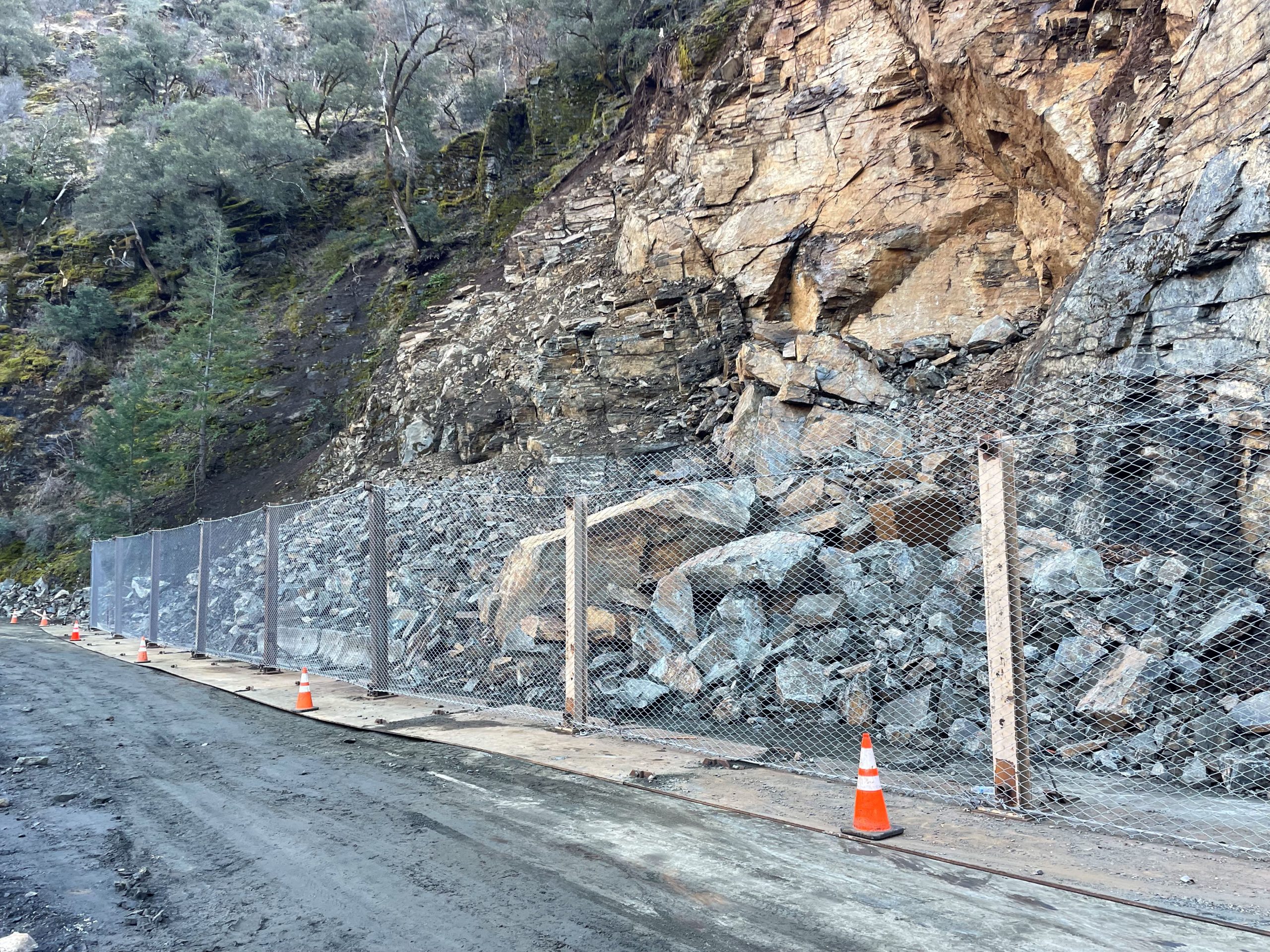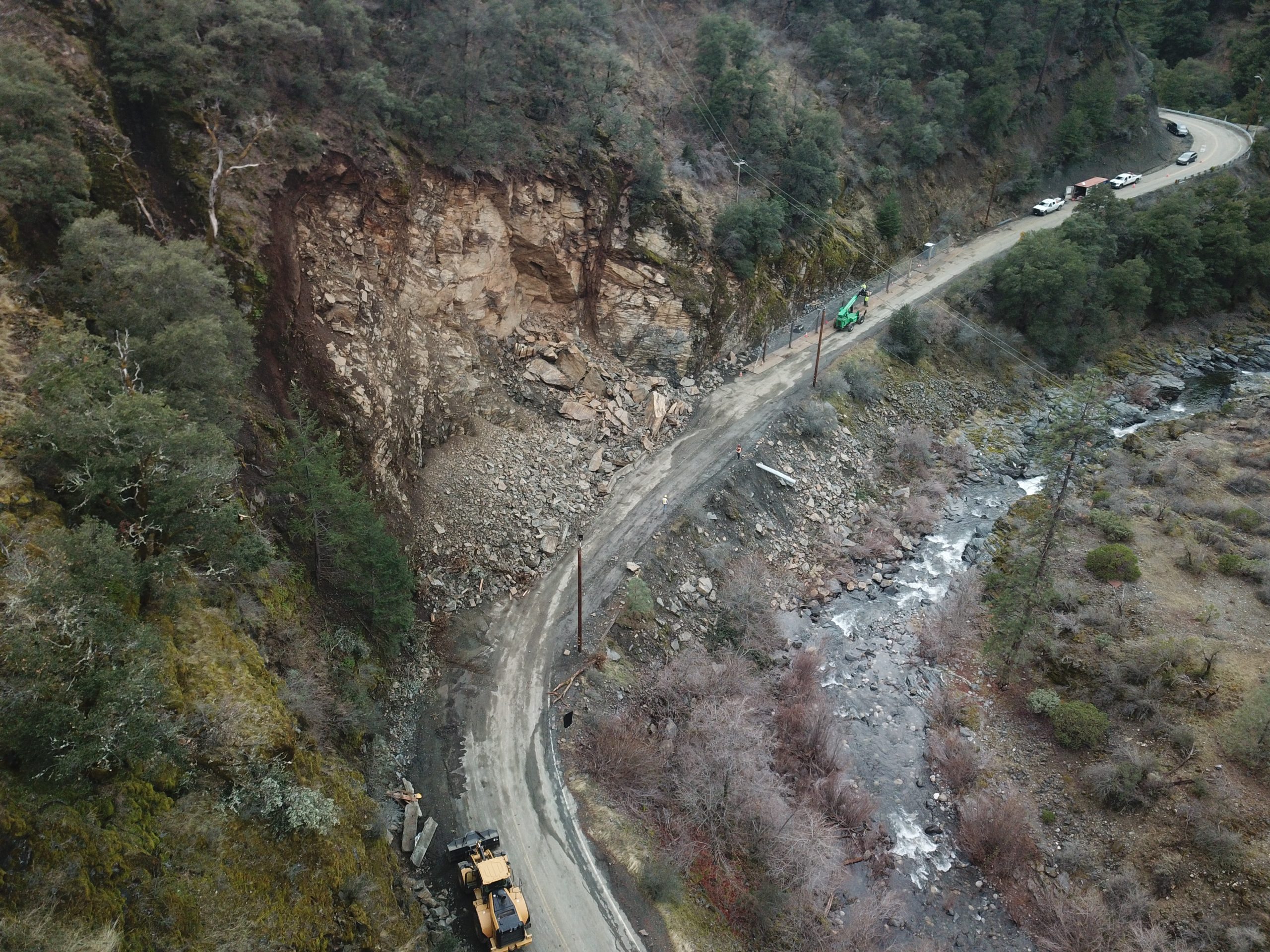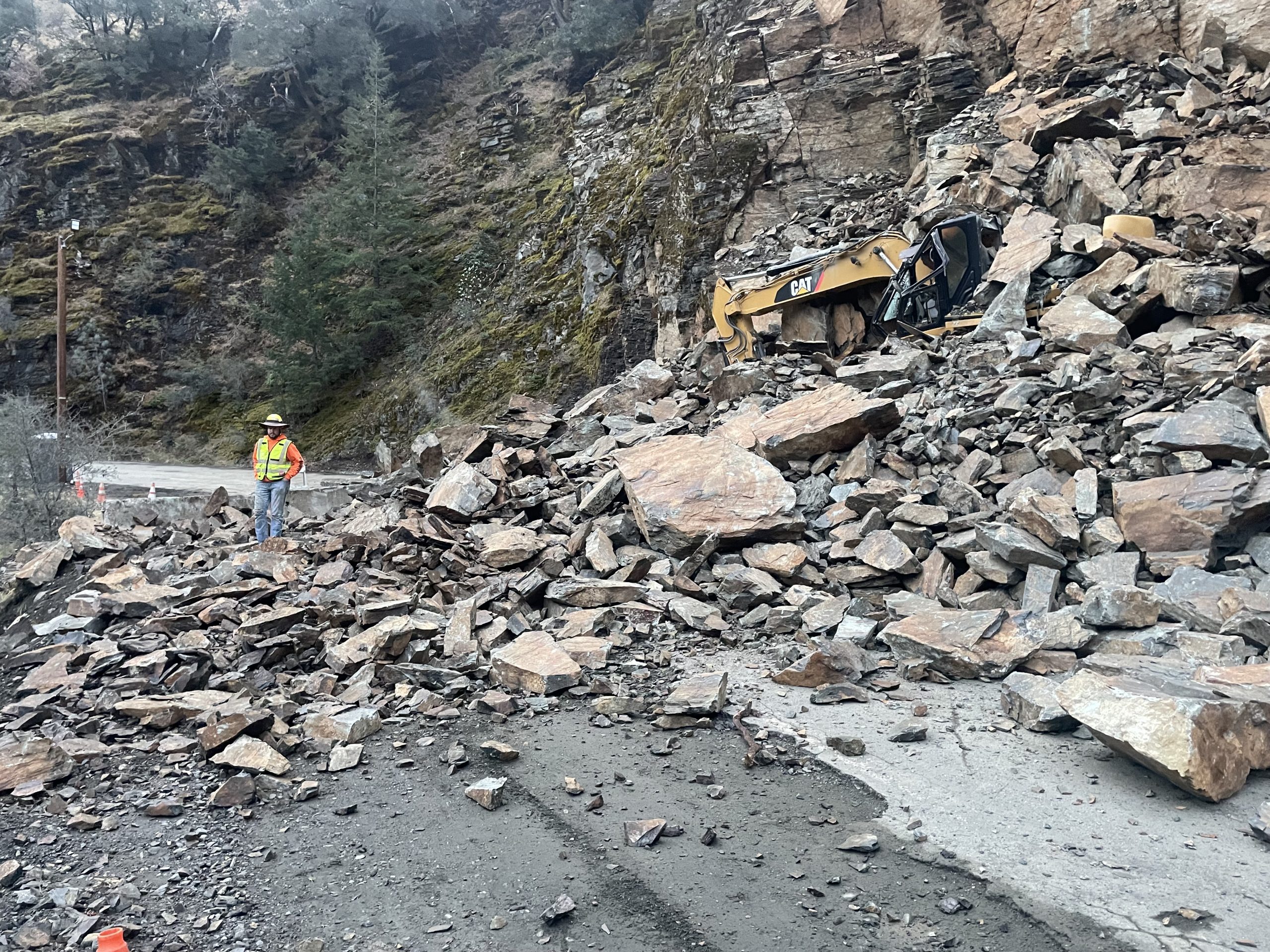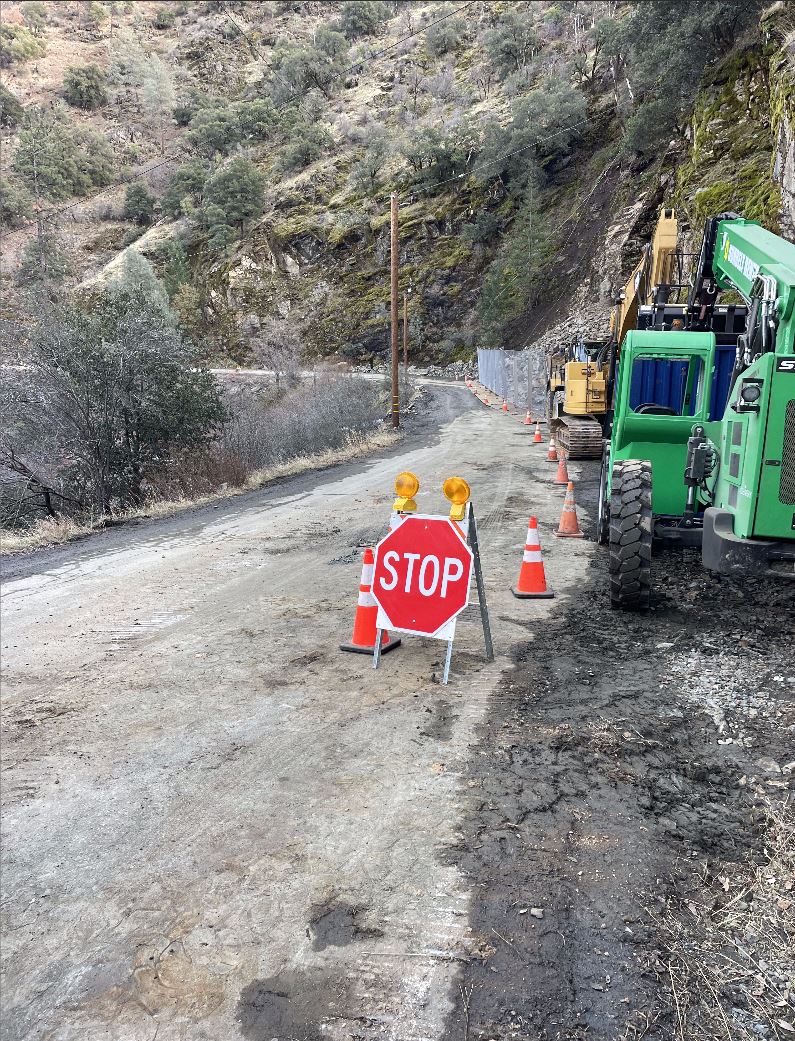







In 2021, Access Limited investigated a rockslide along Canyon Creek to devise both temporary and permanent protection solutions for the roadway. The exposed rock formations, primarily schist and meta-sedimentary rocks with traces of shale, are highly susceptible to mechanical and chemical weathering due to their hydrothermally altered nature.
The project site, situated along the near-vertical to vertical road cut for Canyon Creek Road, underwent cleanup during the initial rockslide, where large rock blocks buried the excavator. Two areas required mitigation and protection. Priority site 1, with boulders of approximately 8-ft x 10-ft and large open cracks above the slope's brow, spans a 100-ft height and 210 ft road length. Site 2, to the east, posed a potential rockfall area with loose boulders but showed no evidence of slope instability.
Our comprehensive solution involved clearing and grubbing, safety manual and mechanical scaling, and the installation of a moveable rockfall barrier. Additionally, we employed up to 50 (each) 50-foot tieback anchors, up to 500 (each) 9-foot mesh anchors, and up to 40,000 SF of Geobrugg spider mesh.
Rockfall barriers, crucial for reducing the risk of rockslides and debris impacting infrastructure, are typically made of steel cables or mesh anchored to the ground. They absorb falling rock energy and distribute it evenly along their length.
Rockfall barriers incorporate carefully chosen materials for strength, durability, and effective containment of falling rocks. The specific materials vary based on the barrier type and project requirements. Common materials include:
Our team utilized a range of skills, from scaling and crane-suspended rockfall barriers to excavation and rock-bolting. We offer flexible, customized solutions for emergency rockslide management, with the ability to adjust plans mid-project to prioritize public safety and mobility.